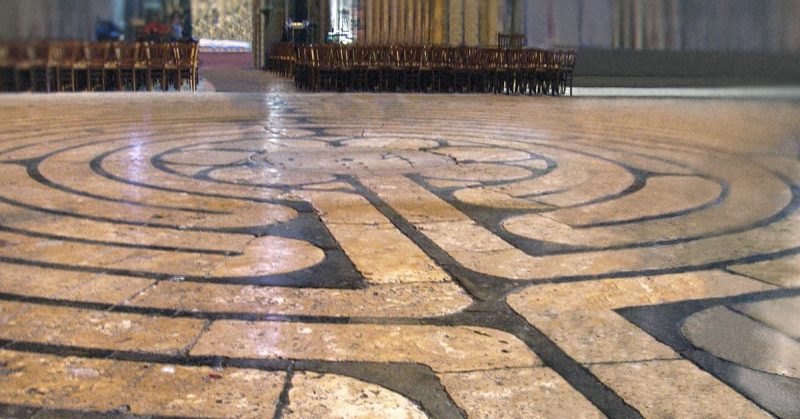A true embodiment of French Gothic expression in architecture, Chartres Cathedral sits some 50 miles southwest of Paris, in the commune of Chartres. The cathedral was built to be higher and bigger than other cathedrals of the era.
One of the cathedral’s most famous features is its intricate labyrinth located in the nave. Little is known about the cathedral builders, therefore little is known about the motives behind one of the most enigmatic labyrinth depictions in the world.
Construction of the Chartres Cathedral unfolded rather faster than was the case with other cathedrals at the time. For instance, the Notre Dame in Paris took almost two centuries to accomplish, starting from 1160. On the Chartres site, activities reportedly began in 1194 and finished in 1221.
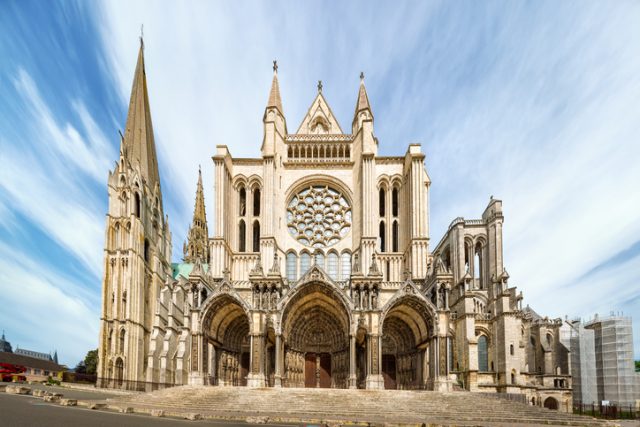
The work on the labyrinth, set in the stone floor of the cathedral’s nave, probably took place during the last six years of building. At 42 feet in diameter, the circular Chartres labyrinth is the largest of its kind to have been constructed in the Middle Ages.
The symbolism of the 11 concentric circles and the central six-lobed rosette — an ancient religious motif — is subtle but significant. The labyrinth depicts the pilgrim’s quest and journey to the Holy Land. Such labyrinths began to appear in Europe during the 12th century, and it was this one in Chartres that served as the standard which other recreations followed.

An intriguing debate that prevails up to the present day is whether a plaque illustrating the Minotaur once stood at the center of the Chartres labyrinth.
While there are some historical accounts that hint to the presence of this notorious creature from Greek mythology, others have argued there is no substantial proof to back up such claim.
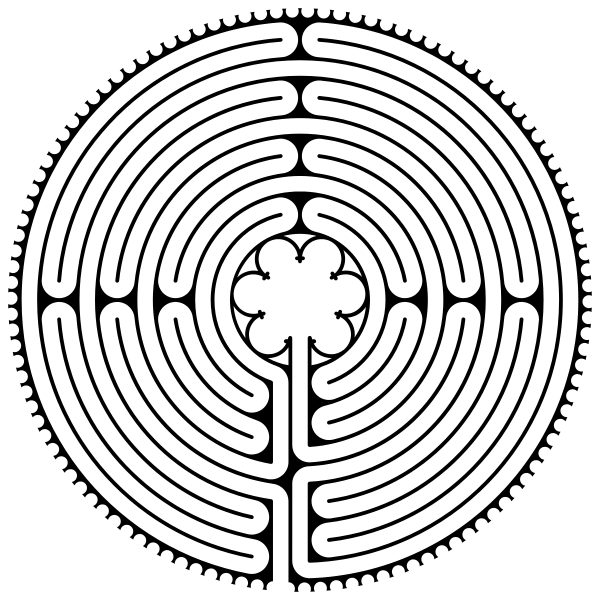
As we also learn from Greek mythology that the Labyrinth is a puzzling place, originally the work of the fabled architect Daedalus. The labyrinth’s purpose, which Daedalus built for King Minos of Crete, was as a prison in which to hold the monstrous Minotaur.
The labyrinth is also suspected to be a burial site, perhaps for Middle Age masons. But an investigation in 2001 didn’t bring any significant results in this regard.
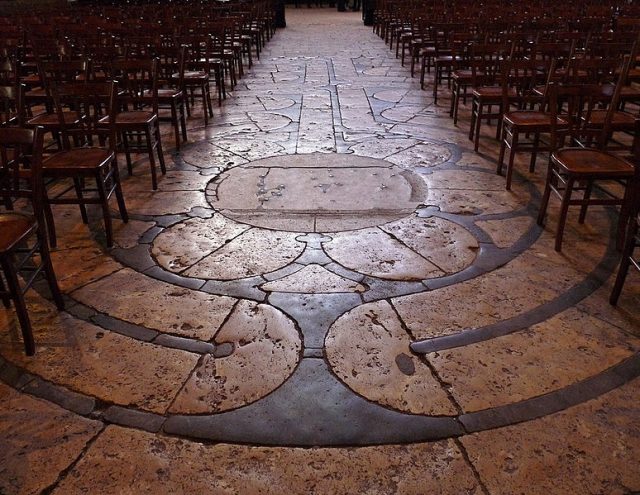
It’s worth to also mention, before completing the current Chartres Cathedral, the site was occupied by at least five other church structures, each substituting a former edifice that suffered in battles or in accidents such as fire.
Related Video: Russia’s Most Beautiful and Eerie Abandoned Church
https://www.youtube.com/watch?v=RBiAH1qHVlQ
Besides its distinguished labyrinth, cathedral goers at Chartres also rever one other well-known relic kept at the site. That is the Sancta Camisa, a tunic believed to have been worn by the Virgin Mary at the time she gave birth to Jesus Christ. However, there is no evidence from before the 12th century to indicate the Sancta Camisa was an item of any particular importance.
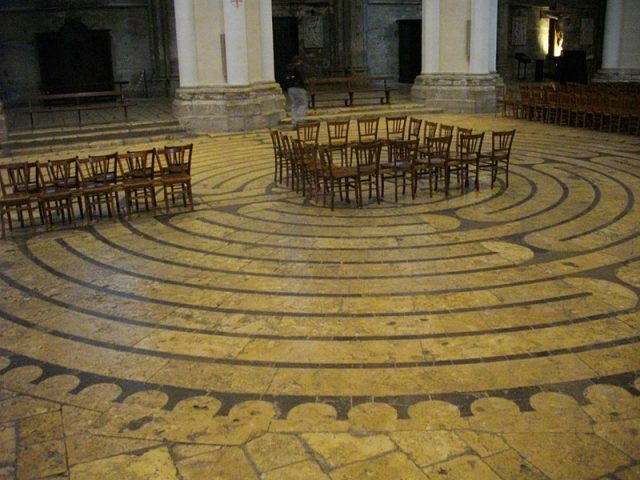
More stories tell that lighting once struck the cathedral causing great damage. For three days, the Sancta Camisa was believed to have been lost, until it turned out priests had hidden the sacred garment as they escaped the scene.
Read another story from us: Ancient Babylonian Artifact Seized at London Airport Returns to Iraq
It seems some mystery will always shroud the Cathédrale Notre-Dame de Chartres. Recognized by UNESCO as a World Heritage Site, the cathedral remains to be one of the best Gothic-style architectural feats worldwide and is regularly busy with tourists, as well as religious devotees for whom it is a pilgrimage destination.
